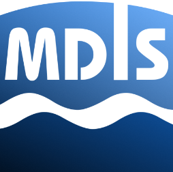Offshore Oil & Gas: OPC-UA Information Model for MCS-DCS
Overview
In the oil and gas industry the major operating companies, oil & gas service companies, DCS vendors, subsea equipment vendors and systems Integrators all have their unique requirements and rules when it comes to their own software and hardware systems. But on the offshore oil and gas platform all of these systems have to come together and work seamlessly. Further these offshore platforms are many times located in harsh environments such as the North Sea or at least inaccessible such as platforms that are near the limit of helicopter travel.
Typically the starting point for these platforms is engineering efforts in excess of a year and costs in the millions of dollars. And changes to systems after it has shipped are very expensive if possible at all.
In 2010 the oil and gas companies banded together to form an organization, the MDIS Network, to decide on the standard communication interface and develop a standard set of objects to link the Subsea gateway, the MCS and the DCS.
MDIS did not wish to build something new, the organization had to select a protocol upon which to build their standard. Their initial list of many protocols, was narrowed down by performance evaluations and detailed technical evaluations, finally selecting OPC UA. Formed by an unique set of requirements by each MDIS member, the key shared features included the support for multi-platforms and information modeling capabilities, which helped the group decide on OPC UA.
MDIS was formed with a vision to optimize the MCS to DCS communications of topside systems, by defining and establishing a standard for the interface, in order to simplify implementation of data communication links, whilst increasing the data quality. By implementing the MDIS standard the operator will benefit from simplified implementation and testing of the MCS – DCS interface, a single common interface to all subsea vendors’ equipment, reduced risk of interface failures and reliable control and monitoring via the DCS.
The focus of MDIS is on the interface between the MCS and the DCS, in order to simplify this communication channel the MDIS network will define standard objects through which data relating to physical subsea components will pass through the interface, standardize the implementation of these objects and define a procedure for testing and certifying products to ensure compliance to the MDIS standard.
Technical Content
This standard is an oil and gas standard for interfacing the Subsea Production Control System (SPCS) with a Master Control Station (MCS) or a Subsea Gateway to the Distributed Control System (DCS).This specification includes:
- A description of common terminology
- Supported architectures
- Information models representing the data that is shared between the systems
- Methods used in the flow of Information
- Profile & Conformance Units describing the grouping of functionality
- Recommended Practices for the use of MDIS.
MDIS was created to define a standard object model that is transported on a common high performance efficient interface between topside and subsea systems in oil and gas installations. The selected protocol (OPC UA) includes independent third party certification.
Companies Behind
The MDIS Network:
- ABB
- Aker Solutions
- Baker Hughes GE
- BP
- Chevron
- ConocoPhillips
- Dril-Quip
- Emerson
- ENGlobal
- ExxonMobil
- Honeywell
- KongsbergMOOG
- OneSubsea
- Petrobras
- Prediktor
- ProServ
- Rockwell Automation
- Schneider Electric
- Shell
- Siemens
- Softing
- Statoil
- TechnipFMC
- Total
- W-Industries
- Woodside
- Yokogawa
More Information
- For more information about the MDIS visit MDIS History page https://opcfoundation.org/markets-collaboration/mdis/mdis-history/
- First edition of the MDIS Standard was published in January 2017, Additional version published in 2018, 2019, 2022.
- Multiple Interoperability events held
- Find the latest version of the specification here on OPC Foundation web:
https://opcfoundation.org/developer-tools/specifications-unified-architecture/mdis-opc-ua-companion-specification/
Contact
- For all OPC UA / MDIS related questions contact Paul Hunkar, DS Interoperability, OPC Consultant for the MDIS Network. You can reach Paul at paul.hunkar[at]dsinteroperability.com
- The MDIS network was officially launched in February 2010 and his currently managed by the OPC Foundation
- The MDIS Network is open to all subsea and topside equipment vendors who have an interest in MCS and DCS equipment. It is also open to operators who are interested in shaping the standard for the communication between the MCS and DCS system. It is also open to all OPC Members.
About MDIS
MDIS was formed with a vision to optimize the MCS to DCS communications of topside systems, by defining and establishing a standard for the interface, in order to simplify implementation of data communication links, whilst increasing the data quality. By implementing the MDIS standard the operator will benefit from simplified implementation and testing of the MCS – DCS interface, a single common interface to all subsea vendors’ equipment, reduced risk of interface failures and reliable control and monitoring via the DCS.
The focus of MDIS is on the OPC UA interface between the MCS and the DCS, in order to simplify this communication channel the MDIS network has define standard objects through which data relating to physical subsea components will pass, standardise implementation of these objects and define a formal testing and certification of products to ensure compliance to the MDIS standard. The certification is available from the OPC Foundation, via the standard OPC Certification program.





